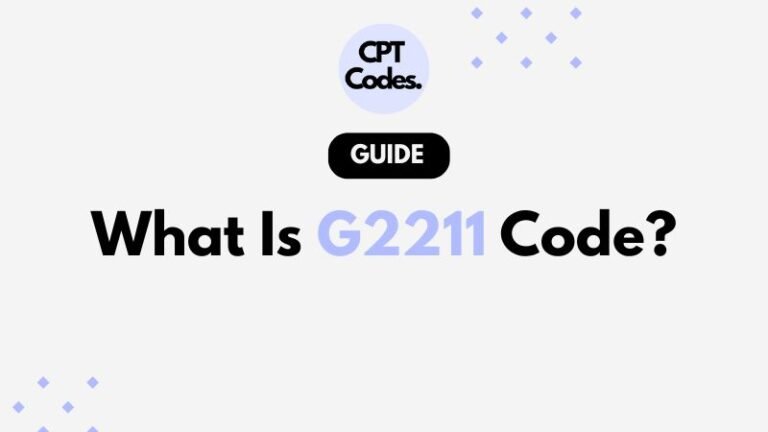G2211 is an HCPCS add-on code introduced in 2024 that lets providers bill for the extra complexity inherent in ongoing primary care during an E&M (Evaluation & Management) visit, especially when supporting a long-term relationship with the patient.
In 2025, its use expanded so clinicians can also add it to Medicare Annual Wellness Visits. It rewards the extra effort to manage chronic or serious conditions in routine visits.
Why G2211 Matters
The G2211 code acknowledges that primary care often involves more than just treating the immediate concern. When a provider uses a visit to manage or check in on chronic or complex health issues while maintaining continuity of care, G2211 helps compensate for that added work.
With the 2025 update, G2211 can be billed with Annual Wellness Visits, which encourages more holistic patient visits rather than just quick checkups. It increases reimbursement and reinforces the value of meaningful doctor-patient relationships.
How G2211 Works in Practice
- You can bill G2211 alongside standard E&M CPT codes (99202-99205 and 99211-99215).
- From 2025 onward, G2211 may also be added to Medicare Annual Wellness Visit codes (G0438, G0439).
- To justify its use, medical records need to show that the provider addressed or managed a serious or complex condition in that same visit.
- You do not need a special diagnosis. Using it depends more on how the visit unfolded (the longitudinal care component) than on a particular disease.
For example, a patient comes for a flu, but the provider also reviews and addresses their diabetes or heart condition in that same visit. If the provider is already part of that patient’s ongoing care team, G2211 may apply. But if the patient is new or just wants a quick problem fix, G2211 likely does not qualify.
G2211 vs Care Management Programs
Some confusion arises between G2211 and care management models like Advanced Primary Care Management (APCM). Here is the distinction:
-
G2211 is used during in-office visits. It enhances reimbursement when clinicians deliver added value at the time of the encounter.
-
APCM or care management programs cover activities between visits such as nurse outreach, remote monitoring, and transitions of care. They often require broader infrastructure like 24/7 access, patient portals, and home visits.
-
G2211 has fewer structural requirements. It does not demand all the features APCM requires. According to CMS, they are not duplicative because they recognize different kinds of professional work.
A practice can use both G2211 (in visits) and APCM (between visits) to support comprehensive patient care.
Reimbursement and Financial Impact
- The national average reimbursement for G2211 is about $16, though it varies by state.
- When applied to Annual Wellness Visits, reimbursement rises. For instance, adding G2211 can boost the payment for G0438 by around 9 percent and for G0439 by around 14 percent.
- Integrating G2211 increases financial viability for practices that invest in continuity and complexity of care, especially for Medicare patients.
Tips for Adopting G2211
-
Document carefully. Ensure notes clearly show the provider addressed chronic or complex conditions in that same visit.
-
Leverage continuity. G2211 works best when the provider serves as the focal point of the patient’s ongoing care.
-
Train staff. Clinicians, coders, and billing teams all need to understand when G2211 is appropriate.
-
Pair wisely. Use G2211 alongside care management models, not in place of them.
-
Monitor reimbursement. Track how often G2211 claims are accepted and analyze your state’s reimbursement rates.
G2211 is a meaningful step toward recognizing the behind-the-scenes complexity in primary care visits. It encourages practices to deepen patient relationships and ensures clinicians are compensated when they manage chronic or serious illnesses within standard encounters.

